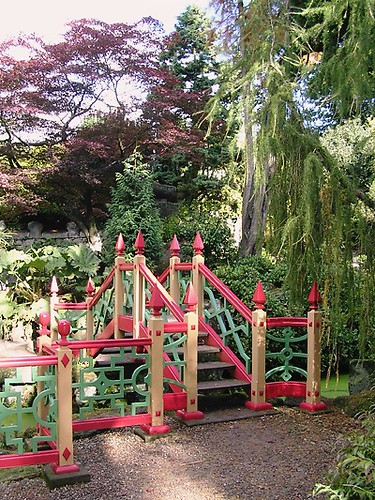You have finally understood how an organic garden could save you money on groceries. The time to do it is now. To follow is plenty of useful advice to get your organic garden underway.
Use annuals and biennials to enliven your flower beds. You can use biennial and annual flowers to brighten the bed, and let you change how it looks. Use these beautiful flowers to line your driveway, surround trees and shrubs, and for decorative hanging baskets. Some of these that you might consider are petunias, marigolds and sunflowers. If those are not flowers you like, you can also try cosmos, holyhocks or rudbeckias.
Cover any wall or fence with climbers. Climbing foliage is a great way to disguise unsightly features on your property, sometimes in the span of just one season. You can direct them over certain branches or boards, or you can send them through plants you already have. Some must be tied onto a support, but a number of climbers attach to surfaces with twining stems or tendrils. Some of the most reliable varieties are wisteria, clematis, jasmine, honeysuckle and climbing roses.
Be sure to weed your garden. If you have weeds in your garden, it will not be as nice as it could be. Try using white vinegar to get rid of weeds. White vinegar is a fantastic weed killer! So, use a spray solution of white vinegar if you are tired of pulling those weeds by hand.
Seeds should be soaked in a dark area overnight. Place your seeds in a container filled with water. This way, your seeds are well-hydrated and can start growing with a head start. The seeds will have a better chance of surviving and maturing.
It’s easy to just jump in and start horticulture without thought, but it’s important to plan your garden first. Having a planting plan will help you correctly identify the young plants once they start to sprout. In addition, some plants are so small you might forget you planted them once all your plants sprout. Planning stops these plants from getting lost in the crowd.
Always fertilize your garden. Manure is great in enabling plants to grow, although it’s vital to use commercially composted products in order to lessen the risk of a variety of pathogens. The options for fertilizing are vast and include environmentally sound choices, so no matter which you choose, just be sure to use one.
You should think about adding evergreen plants that yield berries into your yard space. These year-round berries will give the rest of your yard a much-needed pop of color, especially in the winter. Some examples include Holly, Snowberry trees, Winterberry and similar plants.
Buy a wheelbarrow and kneeling stool to work with in the garden. Horticulture can take a toll on the knees, but a small ergonomic stool will be a comfortable solution. Using a wheelbarrow or wagon to transport heavy loads of dirt will help protect you from back injuries so make sure that you have one.
There is always a best time to pick your garden’s vegetables, and you should know them. Individual vegetables have distinct windows of time to pick for getting the greatest flavors. For example, baby peas and zucchini taste best when they are picked young. Yet, in reverse, tomatoes must wait for prime-ripeness before they are subject to being picked. Thus, you ought to familiarize yourself with the best times to pick the produce from your garden.
You must consider how much light is available when starting your plants indoors. If the garden will receive little sunlight, find plants that can grow in medium or low-light environments. You could also consider using grow-lights for this exact purpose.
Do not plant your seeds in a rush. First, you should loosen the soil, and ensure that it is sufficiently moist. Then distribute the seeds so that they are evenly spaced and have sufficient room to grow. Bury them three times as deep as the size of the seeds. There are some varieties of seed that are not planted underground since they require light to grow.
Take your seedlings and saplings to a cooler spot once they are established. As they begin growing you can move them farther away from heat sources. You can now take off any protective coverings on your plants that were there to shield them from the elements. Monitor the seeds carefully so you know the best time to do it.
Certification is important in order to be considered a legitimate organic gardener. This also does several things to boost your business. First, it is likely to increase your sales as it builds trust in more customers. Second, it shows customers who have been loyal that the quality produce you provide is top notch.
At this point, you should feel more confident about your gardening skills. You may have thought you were prepared before, but now you will be a veritable expert! The above tips should help you begin growing an organic garden that is beautiful and healthy.
This Organic Horticulture Tips For Budding Organic Gardeners first appeared at Small Garden Design
